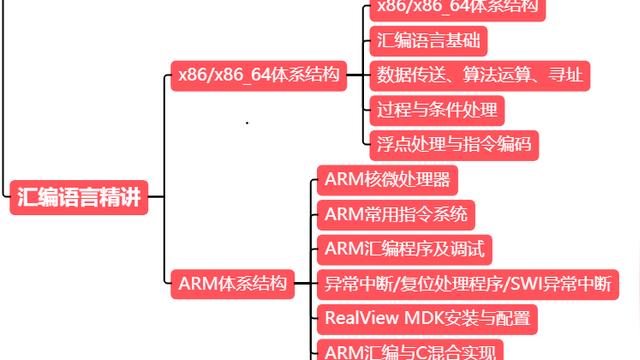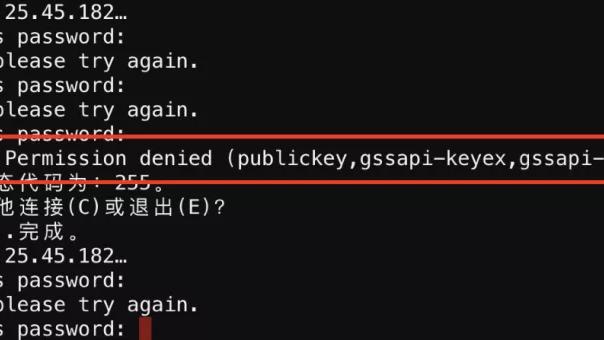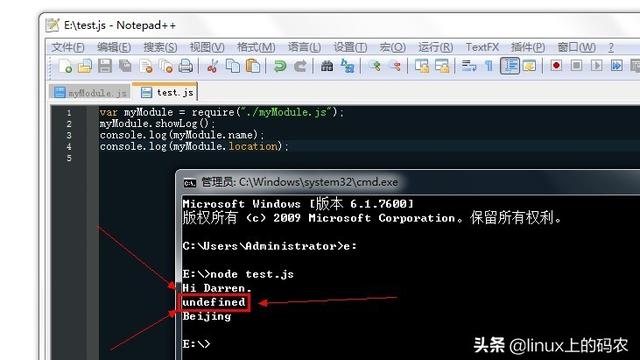对于较多数量的文件描述符的监听无论是select还是poll系统调用都显得捉襟见肘,poll每次都需要将所有的文件描述符复制到内核,内核本身不会对这些文件描述符加以保存,这样的设计就导致了poll的效率的低下。
而epoll则对此做了相应的改进,不是epoll_wait的时候才传入fd,而是通过epoll_ctl把所有fd传入内核,再一起”wait”,这就省掉了不必要的重复拷贝。
其次,在 epoll_wait时,也不是把current轮流地加入fd对应的设备等待队列,而是在设备等待队列醒来时调用一个回调函数(当然,这就需要“唤醒回调”机制),把产生事件的fd归入一个链表,然后返回这个链表上的fd。另外,epoll机制实现了自己特有的文件系统eventpoll filesystem。
epoll初始化
当系统启动时,epoll会进行初始化操作:
static int __init eventpoll_init(void)
{
mutex_init(&epmutex);
/* Initialize the structure used to perform safe poll wait head wake ups */
ep_poll_safewake_init(&psw);
/* Allocates slab cache used to allocate "struct epitem" items */
epi_cache = kmem_cache_create("eventpoll_epi", sizeof(struct epitem),
0, SLAB_HWCACHE_ALIGN|EPI_SLAB_DEBUG|SLAB_PANIC,
NULL);
/* Allocates slab cache used to allocate "struct eppoll_entry" */
pwq_cache = kmem_cache_create("eventpoll_pwq",
sizeof(struct eppoll_entry), 0,
EPI_SLAB_DEBUG|SLAB_PANIC, NULL);
return 0;
}
fs_initcall(eventpoll_init);上面的代码实现一些数据结构的初始化,通过fs/eventpoll.c中的注释可以看出,有三种类型的锁机制使用场景:
1.epmutex(mutex):用户关闭文件描述符,但是没有调用EPOLL_CTL_DEL
2.ep->mtx(mutex):用户态与内核态的转换可能会睡眠
3.ep->lock(spinlock):内核态与具体设备中断过程中的转换,poll回调
接下来就是使用slab分配器动态分配内存,第一个结构为当系统中添加一个fd时,就创建一epitem结构体,内核管理的基本数据结构。
内核数据结构
epoll在内核主要维护了两个数据结构eventpoll与epitem,其中eventpoll表示每个epoll实例本身,epitem表示的是每一个IO所对应的的事件。
struct epitem {
/* RB tree node used to link this structure to the eventpoll RB tree */
struct rb_node rbn; /*用于挂载到eventpoll管理的红黑树*/
/* List header used to link this structure to the eventpoll ready list */
struct list_head rdllink; /*挂载到eventpoll.rdlist的事件就绪队列*/
/*
* Works together "struct eventpoll"->ovflist in keeping the
* single linked chain of items.
*/
struct epitem *next; /*用于主结构体中的链表*/
/* The file descriptor information this item refers to */
struct epoll_filefd ffd; /*该结构体对应的被监听的文件描述符信息(fd+file, 作为红黑树的key)*/
/* Number of active wait queue attached to poll operations */
int nwait; /*poll(轮询操作)的事件个数
/* List containing poll wait queues */
struct list_head pwqlist; /*双向链表,保存被监视文件的等待队列,功能类似于select/poll中的poll_table;同一个文件上可能会监视多种事件,这些事件可能从属于不同的wait_queue中,所以需要使用链表
/* The "container" of this item */
struct eventpoll *ep; /*当前epitem的所有者(多个epitem从属于一个eventpoll)*/
/* List header used to link this item to the "struct file" items list */
struct list_head fllink; /*双向链表,用来链接被监视的文件描述符对应的struct file。因为file里有f_ep_link用来保存所有监视这个文件的epoll节点
/* The structure that describe the interested events and the source fd */
struct epoll_event event; /*注册感兴趣的事件,也就是用户空间的epoll_event
};而每个epoll fd对应的主要数据结构为:
struct eventpoll {
/* Protect the this structure access */
spinlock_t lock; /*自旋锁,在kernel内部用自旋锁加锁,就可以同时多线(进)程对此结构体进行操作,主要是保护ready_list*/
/*
* This mutex is used to ensure that files are not removed
* while epoll is using them. This is held during the event
* collection loop, the file cleanup path, the epoll file exit
* code and the ctl operations.
*/
struct mutex mtx; /*防止使用时被删除*/
/* Wait queue used by sys_epoll_wait() */
wait_queue_head_t wq; /*sys_epoll_wait()使用的等待队列*/
/* Wait queue used by file->poll() */
wait_queue_head_t poll_wait; /*file->epoll()使用的等待队列*/
/* List of ready file descriptors */
struct list_head rdllist; /*事件就绪链表*/
/* RB tree root used to store monitored fd structs */
struct rb_root rbr; /*用于管理当前epoll关注的文件描述符(树根)*/
/*
* This is a single linked list that chains all the "struct epitem" that
* hAppened while transfering ready events to userspace w/out
* holding ->lock.
*/
struct epitem *ovflist; /*在向用户空间传输就绪事件的时候,将同时发生事件的文件描述符链入到这个链表里面*/
};
函数调用关系
epoll_create
每个eventpoll通过epoll_create()创建:
asmlinkage long sys_epoll_create(int size)
{
int error, fd = -1;
struct eventpoll *ep;
DNPRINTK(3, (KERN_INFO "[%p] eventpoll: sys_epoll_create(%d)n",
current, size));
/*
* Sanity check on the size parameter, and create the internal data
* structure ( "struct eventpoll" ).
*/
error = -EINVAL;
/*为ep分配内存并进行初始化*/
if (size <= 0 || (error = ep_alloc(&ep)) < 0) {
fd = error;
goto error_return;
}
/*
* Creates all the items needed to setup an eventpoll file. That is,
* a file structure and a free file descriptor.
*/
/*调用anon_inode_getfd新建一个struct file,也就是epoll可以看成一个文件(由* 于没有任何文件系统,为匿名文件)。并且将主结构体struct eventpoll *ep放入* file->private项中进行保存(sys_epoll_ctl会取用)*/
fd = anon_inode_getfd("[eventpoll]", &eventpoll_fops, ep);
if (fd < 0)
ep_free(ep);
error_return:
DNPRINTK(3, (KERN_INFO "[%p] eventpoll: sys_epoll_create(%d) = %dn",
current, size, fd));
return fd;
}epoll_ctl
asmlinkage long sys_epoll_ctl(int epfd, int op, int fd,
struct epoll_event __user *event)
{
int error;
struct file *file, *tfile;
struct eventpoll *ep;
struct epitem *epi;
struct epoll_event epds;
DNPRINTK(3, (KERN_INFO "[%p] eventpoll: sys_epoll_ctl(%d, %d, %d, %p)n",
current, epfd, op, fd, event));
error = -EFAULT;
/*判断参数合法性,将__user *event 复制给epds*/
if (ep_op_has_event(op) &&
copy_from_user(&epds, event, sizeof(struct epoll_event)))
goto error_return;
/* Get the "struct file *" for the eventpoll file */
error = -EBADF;
file = fget(epfd); /*epoll fd对应的文件对象*/
if (!file)
goto error_return;
/* Get the "struct file *" for the target file */
tfile = fget(fd); /*fd对应的文件对象*/
if (!tfile)
goto error_fput;
/* The target file descriptor must support poll */
error = -EPERM;
if (!tfile->f_op || !tfile->f_op->poll)
goto error_tgt_fput;
...
/*
* At this point it is safe to assume that the "private_data" contains
* our own data structure.
*/
ep = file->private_data; /*在create时存入进去的(anon_inode_getfd),现在取用。*/
mutex_lock(&ep->mtx);
/*
* Try to lookup the file inside our RB tree, Since we grabbed "mtx"
* above, we can be sure to be able to use the item looked up by
* ep_find() till we release the mutex.
*/
epi = ep_find(ep, tfile, fd); /*防止重复添加(在ep的红黑树中查找是否已经存在这个fd)*/
switch (op) {
case EPOLL_CTL_ADD: /*新增一个监听fd*/
if (!epi) {
epds.events |= POLLERR | POLLHUP; /*默认包含POLLERR和POLLHUP事件*/
error = ep_insert(ep, &epds, tfile, fd); /*在ep的红黑树中插入这个fd对应的epitm结构体。*/
} else /*重复添加(在ep的红黑树中查找已经存在这个fd)。*/
error = -EEXIST;
break;
...
}
...
return error;
}
其中ep_insert的实现如下:
```c
static int ep_insert(struct eventpoll *ep, struct epoll_event *event,
struct file *tfile, int fd)
{
int error, revents, pwake = 0;
unsigned long flags;
struct epitem *epi;
struct ep_pqueue epq;
error = -ENOMEM;
/*分配一个epitem结构体来保存每个存入的fd*/
if (!(epi = kmem_cache_alloc(epi_cache, GFP_KERNEL)))
goto error_return;
/* Item initialization follow here ... */
/*初始化该结构体*/
INIT_LIST_HEAD(&epi->rdllink);
INIT_LIST_HEAD(&epi->fllink);
INIT_LIST_HEAD(&epi->pwqlist);
epi->ep = ep;
ep_set_ffd(&epi->ffd, tfile, fd);
epi->event = *event;
epi->nwait = 0;
epi->next = EP_UNACTIVE_PTR;
/* Initialize the poll table using the queue callback */
epq.epi = epi;
/*安装poll回调函数*/
init_poll_funcptr(&epq.pt, ep_ptable_queue_proc);
/*
* Attach the item to the poll hooks and get current event bits.
* We can safely use the file* here because its usage count has
* been increased by the caller of this function. Note that after
* this operation completes, the poll callback can start hitting
* the new item.
*/
/*
* 调用poll函数来获取当前事件位,其实是利用它来调用注册函数ep_ptable_queue_proc(poll_wait中调用)。
* 如果fd是套接字,f_op为socket_file_ops,poll函数是sock_poll()。
* 如果是TCP套接字的话,进而会调用到tcp_poll()函数。此处调用poll函数查看当前文件描述符的状态,存储在revents中。
* 在poll的处理函数(tcp_poll())中,会调用sock_poll_wait(),
* 在sock_poll_wait()中会调用到epq.pt.qproc指向的函数,也就是ep_ptable_queue_proc()。
*/
revents = tfile->f_op->poll(tfile, &epq.pt);
/* Add the current item to the list of active epoll hook for this file */
spin_lock(&tfile->f_ep_lock);
list_add_tail(&epi->fllink, &tfile->f_ep_links);
spin_unlock(&tfile->f_ep_lock);
/*
* Add the current item to the RB tree. All RB tree operations are
* protected by "mtx", and ep_insert() is called with "mtx" held.
*/
ep_rbtree_insert(ep, epi); /*将该epi插入到ep的红黑树中*/
/* We have to drop the new item inside our item list to keep track of it */
spin_lock_irqsave(&ep->lock, flags);
/* If the file is already "ready" we drop it inside the ready list */
/*
* revents & event->events:刚才fop->poll的返回值中标识的事件有用户event关心的事件发生。
* !ep_is_linked(&epi->rdllink):epi的ready队列中有数据。ep_is_linked用于判断队列是否为空。
*/
/* 如果要监视的文件状态已经就绪并且还没有加入到就绪队列中,则将当前的epitem加入到就绪队列中.如果有进程正在等待该文件的状态就绪,则唤醒一个等待的进程。 */
if ((revents & event->events) && !ep_is_linked(&epi->rdllink)) {
/*将当前epi插入到ep->ready队列中。*/
list_add_tail(&epi->rdllink, &ep->rdllist);
/* Notify waiting tasks that events are available */
/* 如果有进程正在等待文件的状态就绪,也就是调用epoll_wait睡眠的进程正在等待,则唤醒一个等待进程。waitqueue_active(q) 等待队列q中有等待的进程返回1,否则返回0。*/
if (waitqueue_active(&ep->wq))
wake_up_locked(&ep->wq);
/* 如果有进程等待eventpoll文件本身(???)的事件就绪,则增加临时变量pwake的值,pwake的值不为0时,在释放lock后,会唤醒等待进程。 */
if (waitqueue_active(&ep->poll_wait))
pwake++;
}
spin_unlock_irqrestore(&ep->lock, flags);
/* We have to call this outside the lock */
if (pwake)
/*唤醒等待eventpoll文件状态就绪的进程*/
ep_poll_safewake(&psw, &ep->poll_wait);
DNPRINTK(3, (KERN_INFO "[%p] eventpoll: ep_insert(%p, %p, %d)n",
current, ep, tfile, fd));
return 0;
...
}init_poll_funcptr(&epq.pt, ep_ptable_queue_proc);和revents = tfile->f_op->poll(tfile, &epq.pt);这两个函数将ep_ptable_queue_proc注册到epq.pt中的qproc。
typedef struct poll_table_struct {
poll_queue_proc qproc;
unsigned long key;
}poll_table;执行f_op->poll(tfile, &epq.pt)时,XXX_poll(tfile, &epq.pt)函数会执行poll_wait(),poll_wait()会调用epq.pt.qproc函数,即ep_ptable_queue_proc。
更多Linux内核视频教程文档资料免费领取后台私信【内核】自行获取。
内核学习网站:
Linux内核源码/内存调优/文件系统/进程管理/设备驱动/网络协议栈-学习视频教程-腾讯课堂
ep_ptable_queue_proc函数如下:
/*当poll醒来时就回调用该函数,在文件操作中的poll函数中调用,将epoll的回调函数加入到目标文件的唤醒队列中。如果监视的文件是套接字,参数whead则是sock结构的sk_sleep成员的地址*/
static void ep_ptable_queue_proc(struct file *file, wait_queue_head_t *whead,
poll_table *pt)
{
/*pt获取struct ep_queue的epi字段。*/
struct epitem *epi = ep_item_from_epqueue(pt);
struct eppoll_entry *pwq;
if (epi->nwait >= 0 && (pwq = kmem_cache_alloc(pwq_cache, GFP_KERNEL))) {
init_waitqueue_func_entry(&pwq->wait, ep_poll_callback);
pwq->whead = whead;
pwq->base = epi;
add_wait_queue(whead, &pwq->wait);
list_add_tail(&pwq->llink, &epi->pwqlist);
epi->nwait++;
} else {
/* We have to signal that an error occurred */
/*如果分配内存失败,则将nwait置为-1,表示发生错误,即内存分配失败,或者已发生错误*/
epi->nwait = -1;
}
}其中struct eppoll_entry定义如下:
struct eppoll_entry {
struct list_head llink;
struct epitem *base;
wait_queue_t wait;
wait_queue_head_t *whead;
};ep_ptable_queue_proc 函数完成 epitem 加入到特定文件的wait队列任务。
ep_ptable_queue_proc有三个参数:
struct file *file; 该fd对应的文件对象
wait_queue_head_t *whead; 该fd对应的设备等待队列(同select中的mydev->wait_address)
poll_table *pt; f_op->poll(tfile, &epq.pt)中的epq.pt在ep_ptable_queue_proc函数中,引入了另外一个非常重要的数据结构eppoll_entry。eppoll_entry主要完成epitem和epitem事件发生时的callback(ep_poll_callback)函数之间的关联。首先将eppoll_entry的whead指向fd的设备等待队列(同select中的wait_address),然后初始化eppoll_entry的base变量指向epitem,最后通过add_wait_queue将epoll_entry挂载到fd的设备等待队列上。完成这个动作后,epoll_entry已经被挂载到fd的设备等待队列。
由于ep_ptable_queue_proc函数设置了等待队列的ep_poll_callback回调函数。所以在设备硬件数据到来时,硬件中断处理函数中会唤醒该等待队列上等待的进程时,会调用唤醒函数ep_poll_callback
static int ep_poll_callback(wait_queue_t *wait, unsigned mode, int sync, void *key)
{
int pwake = 0;
unsigned long flags;
struct epitem *epi = ep_item_from_wait(wait);
struct eventpoll *ep = epi->ep;
spin_lock_irqsave(&ep->lock, flags);
/*
* If the event mask does not contain any poll(2) event, we consider the
* descriptor to be disabled. This condition is likely the effect of the
* EPOLLONESHOT bit that disables the descriptor when an event is received,
* until the next EPOLL_CTL_MOD will be issued.
*/
if (!(epi->event.events & ~EP_PRIVATE_BITS))
goto out_unlock;
...
/* If this file is already in the ready list we exit soon */
if (ep_is_linked(&epi->rdllink))
goto is_linked;
/*将该fd加入到epoll监听的就绪链表中*/
list_add_tail(&epi->rdllink, &ep->rdllist);
is_linked:
/*
* Wake up ( if active ) both the eventpoll wait list and the ->poll()
* wait list.
*/
/*唤醒调用epoll_wait()函数时睡眠的进程。用户层epoll_wait(...) 超时前返回。*/
if (waitqueue_active(&ep->wq))
wake_up_locked(&ep->wq);
if (waitqueue_active(&ep->poll_wait))
pwake++;
out_unlock:
spin_unlock_irqrestore(&ep->lock, flags);
/* We have to call this outside the lock */
if (pwake)
ep_poll_safewake(&psw, &ep->poll_wait);
return 1;
} epoll_wait
epoll_wait实现如下:
asmlinkage long sys_epoll_wait(int epfd, struct epoll_event __user *events,
int maxevents, int timeout)
{
int error;
struct file *file;
struct eventpoll *ep;
/* The maximum number of event must be greater than zero */
if (maxevents <= 0 || maxevents > EP_MAX_EVENTS)
return -EINVAL;
/* Verify that the area passed by the user is writeable */
/* 检查用户空间传入的events指向的内存是否可写。参见__range_not_ok()。*/
if (!access_ok(VERIFY_WRITE, events, maxevents * sizeof(struct epoll_event))) {
error = -EFAULT;
goto error_return;
}
/* Get the "struct file *" for the eventpoll file */
/* 获取epfd对应的eventpoll文件的file实例,file结构是在epoll_create中创建。 */
error = -EBADF;
file = fget(epfd);
if (!file)
goto error_return;
/*
* We have to check that the file structure underneath the fd
* the user passed to us _is_ an eventpoll file.
*/
/* 通过检查epfd对应的文件操作是不是eventpoll_fops 来判断epfd是否是一个eventpoll文件。如果不是则返回EINVAL错误。 */
error = -EINVAL;
if (!is_file_epoll(file))
goto error_fput;
/*
* At this point it is safe to assume that the "private_data" contains
* our own data structure.
*/
ep = file->private_data;
/* Time to fish for events ... */
error = ep_poll(ep, events, maxevents, timeout);
error_fput:
fput(file);
error_return:
return error;
}ep_poll
epoll_wait调用ep_poll,ep_poll实现如下:
static int ep_poll(struct eventpoll *ep, struct epoll_event __user *events,
int maxevents, long timeout)
{
int res, eavail;
unsigned long flags;
long jtimeout;
wait_queue_t wait;
/*
* Calculate the timeout by checking for the "infinite" value ( -1 )
* and the overflow condition. The passed timeout is in milliseconds,
* that why (t * HZ) / 1000.
*/
/* timeout是以毫秒为单位,这里是要转换为jiffies时间。这里加上999(即1000-1),是为了向上取整。 */
jtimeout = (timeout < 0 || timeout >= EP_MAX_MSTIMEO) ?
MAX_SCHEDULE_TIMEOUT : (timeout * HZ + 999) / 1000;
retry:
spin_lock_irqsave(&ep->lock, flags);
res = 0;
if (list_empty(&ep->rdllist)) {
/*
* We don't have any available event to return to the caller.
* We need to sleep here, and we will be wake up by
* ep_poll_callback() when events will become available.
*/
/* 没有事件,所以需要睡眠。当有事件到来时,睡眠会被ep_poll_callback函数唤醒。*/
init_waitqueue_entry(&wait, current); /*将current进程放在wait这个等待队列中。*/
wait.flags |= WQ_FLAG_EXCLUSIVE;
/* 将当前进程加入到eventpoll的等待队列中,等待文件状态就绪或直到超时,或被信号中断。 */
__add_wait_queue(&ep->wq, &wait);
for (;;) {
/*
* We don't want to sleep if the ep_poll_callback() sends us
* a wakeup in between. That's why we set the task state
* to TASK_INTERRUPTIBLE before doing the checks.
*/
/* 执行ep_poll_callback()唤醒时应当需要将当前进程唤醒,所以当前进程状态应该为“可唤醒”TASK_INTERRUPTIBLE */
set_current_state(TASK_INTERRUPTIBLE);
/* 如果就绪队列不为空,也就是说已经有文件的状态就绪或者超时,则退出循环。*/
if (!list_empty(&ep->rdllist) || !jtimeout)
break;
/* 如果当前进程接收到信号,则退出循环,返回EINTR错误 */
if (signal_pending(current)) {
res = -EINTR;
break;
}
spin_unlock_irqrestore(&ep->lock, flags);
/*
* 主动让出处理器,等待ep_poll_callback()将当前进程唤醒或者超时,返回值是剩余的时间。
* 从这里开始当前进程会进入睡眠状态,直到某些文件的状态就绪或者超时。
* 当文件状态就绪时,eventpoll的回调函数ep_poll_callback()会唤醒在ep->wq指向的等待队列中的进程。
*/
jtimeout = schedule_timeout(jtimeout);
spin_lock_irqsave(&ep->lock, flags);
}
__remove_wait_queue(&ep->wq, &wait);
set_current_state(TASK_RUNNING);
}
/* Is it worth to try to dig for events ? */
/*
* ep->ovflist链表存储的向用户传递事件时暂存就绪的文件。
* 所以不管是就绪队列ep->rdllist不为空,或者ep->ovflist不等于
* EP_UNACTIVE_PTR,都有可能现在已经有文件的状态就绪。
* ep->ovflist不等于EP_UNACTIVE_PTR有两种情况,一种是NULL,此时
* 可能正在向用户传递事件,不一定就有文件状态就绪,
* 一种情况时不为NULL,此时可以肯定有文件状态就绪,
* 参见ep_send_events()。
*/
eavail = !list_empty(&ep->rdllist);
spin_unlock_irqrestore(&ep->lock, flags);
/*
* Try to transfer events to user space. In case we get 0 events and
* there's still timeout left over, we go trying again in search of
* more luck.
*/
/* 如果没有被信号中断,并且有事件就绪,但是没有获取到事件(有可能被其他进程获取到了),并且没有超时,则跳转到retry标签处,重新等待文件状态就绪。 */
if (!res && eavail &&
!(res = ep_send_events(ep, events, maxevents)) && jtimeout)
goto retry;
/* 返回获取到的事件的个数或者错误码 */
return res;
}ep_send_events()函数向用户空间发送就绪事件。
ep_send_events()函数将用户传入的内存简单封装到ep_send_events_data结构中,然后调用ep_scan_ready_list()将就绪队列中的事件传入用户空间的内存。 用户空间访问这个结果,进行处理。




















